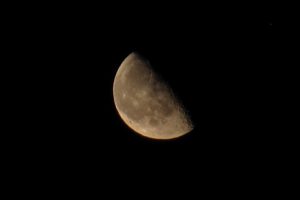
Lunar Eclipse Coincides With Winter Solstice
 The 2010 Winter Solstice on December 21st coincided with a spectacular full lunar eclipse for the first time since 1638. For those lucky to have seen the eclipse in all its glory, they would have seen the moon turn a lovely red-orange colour.
The 2010 Winter Solstice on December 21st coincided with a spectacular full lunar eclipse for the first time since 1638. For those lucky to have seen the eclipse in all its glory, they would have seen the moon turn a lovely red-orange colour.
Although a lunar eclipse can occur as many as 3 times a year, this was the first time in over 300 years that a full Lunar Eclipse occurred on the Winter Solstice.
A total lunar eclipse occurs during the full Moon phase, when the Sun, Earth and Moon are in perfect alignment. As the Moon passes completely into the Earth’s shadow, it begins to take on a red-orange hue, which if there is little or no atmospheric dust, or cloud cover, can turn the sky red! The change in colour is caused by reduced light from the Sun, reaching the Moon’s surface.
Recognised for millennia as the shortest day of the year, the Winter Solstice, typically falls on or around the 21st December. It was traditionally celebrated as the rebirth of the sun – and return to light.
It is predicted that the next time a Full Lunar Eclipse will occur on the Winter Solstice, is in the year 2094.